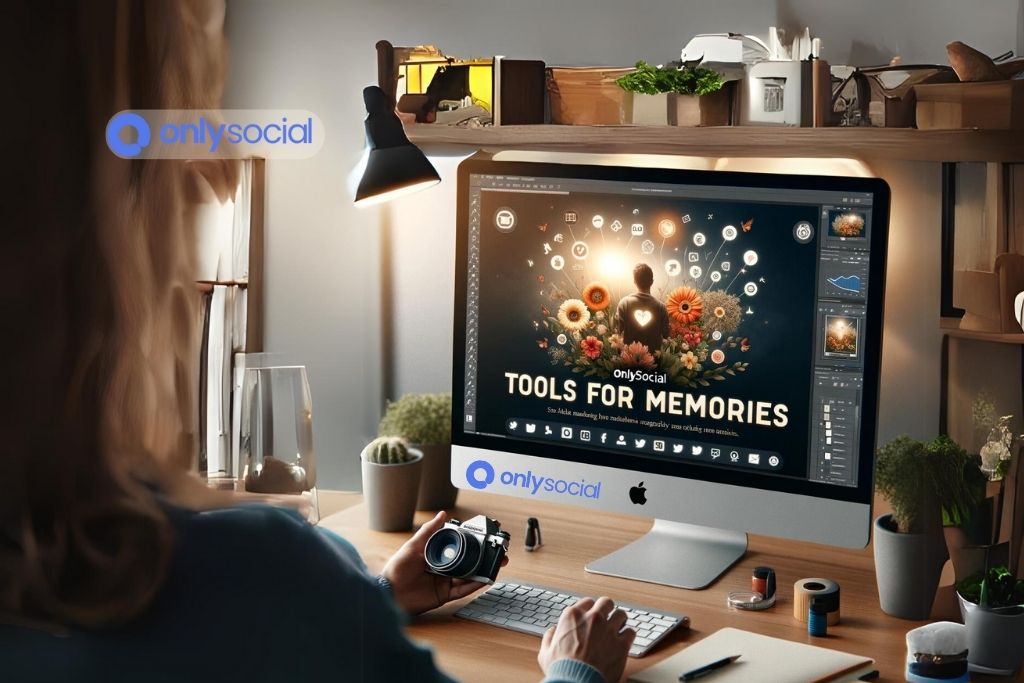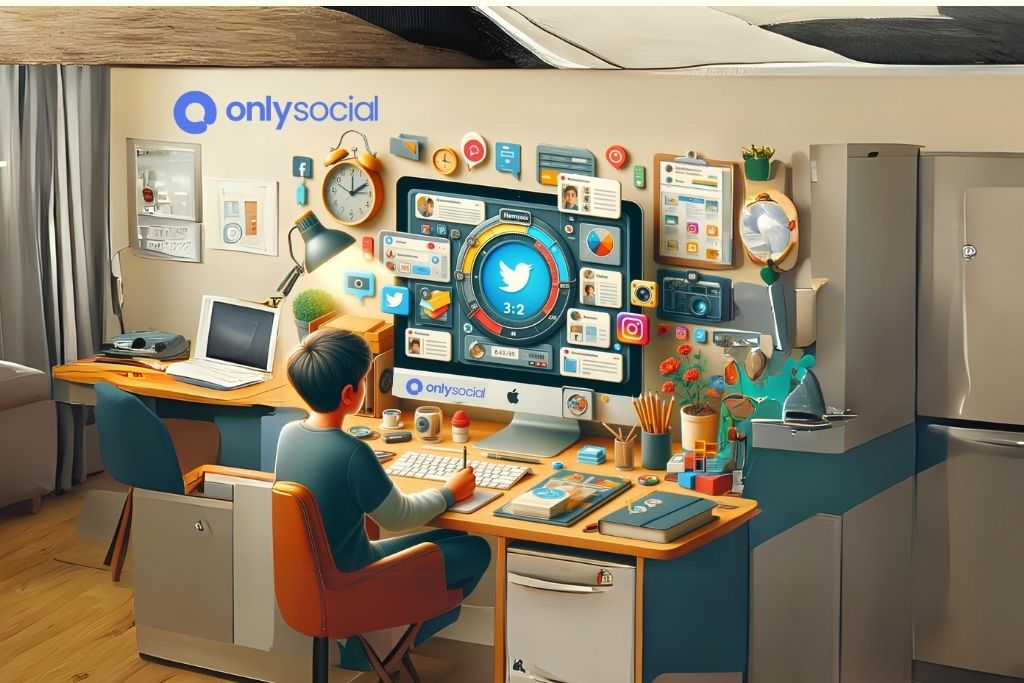Preserving Your Past: A Comprehensive Look at Organizational Tools for Memories

We are often swept up in the rush of the present moment, forgetting that our past holds clusters of extraordinary instances that shape us. Every photograph, handwritten letter, and keepsake carries a profound memory that forms the rich tapestry of our lives. Yet, preserving these precious memories for the future can turn into an overwhelming task without the correct system in place. This is where organizational tools for memories step into the picture.
These organizational tools serve as your very own time capsule, whisking you back to marvel at your journey with a mere glance. In this era of digital revolution and innovative solutions, it’s high time we leveraged these unique tools to efficiently catalog and store our treasured memories.
You might be wondering – what exactly are these ‘organizational tools for memories’? How do they work? What options do I have?
In this blog post, we delve into exploring and answering these questions. We aim to assist you in navigating the world of memory organization, so you can preserve your precious moments for future nostalgia, whether digitally or traditionally. Sit back, relax, and let’s uncover the wonderful array of organizational tools for memories waiting at your disposal. Let’s embark on this journey of discovery, giving your memories the attention and preservation they deserve.
Table of Contents [show]
The Need for Organizational Tools for Memories
Life’s unforgettable moments come to us unbidden and swift, leaving us with a treasure trove of memories. And as the keepers of these wonderful flashes in time, it is our responsibility to ensure they’re stored with care. This is where the organizational tools for memories establish their significant role.
Let’s take a moment to understand the need for these organizational tools, and how they make conserving memories an enjoyable and effective task.
Challenges in Organizing Memories
Organizing memories can turn into a daunting task if tackled without a systematic approach. Here are a few common challenges one might face:
| Challenge | Description |
|---|---|
| Volume | As time goes by, the volume of memories one accumulates increases considerably. This can make the task of organizing them overwhelming. |
| Diversity | Memories come in various forms, ranging from physical keepsakes like photographs and letters to digital assets such as videos, social media posts, and more. Managing this diversity can be tricky. |
| Preservation | Both physical and digital memories can degrade or become obsolete over time if not preserved properly. |
| Accessibility | The ability to quickly access specific memories when needed can be a daunting task without proper organization. |
The Value of Organizational Tools for Memories
By working around these challenges, organizational tools for memories bring enormous value to the table:
- Preservation: These tools can help preserve your memories in their best form, preventing them from degrading or becoming obsolete.
- Categorization: They can help in neatly categorizing your memories, making it easier to view and manage them.
- Accessibility: They can improve accessibility, saving you from rummaging through heaps of photos or files when you want to relive a specific moment.
- Security: Modern digital tools offer encrypted storage solutions, ensuring the security of your cherished memories.
Having a system or tool to manage your memories is undeniably beneficial. It not only organizes your past but also allows you to easily revisit and share these unforgettable moments. In the next section, we’ll delve deeper into the types of organizational tools for memories available, catered to your varied needs and preferences.
Exploring Different Organizational Tools for Memories
When it comes to the realm of memory preservation, organizational tools for memories come in an engaging mix of formats. Digital and traditional tools paired with emerging and innovative offerings make up the landscape of memory organization.
Digital Tools
In the age of pixels and cloud storage, digitizing memories has become the answer to saving shoeboxes overflowing with photos. Here are some key-note digital tools to explore:
- Cloud Storage Solutions:
Designed to securely store a vast array of digital memories. Google Photos, Dropbox, and iCloud are few notable options, as they offer exceptional sorting functions and substantial storage space. - Photo-Scanning Apps:
Like Photomyne and Google’s PhotoScan, can convert your old physical photos into high-quality digital images. - Memory Keeping Apps:
Such as Journey and Day One Journal provide a platform to record and save daily moments, including texts, photos, and audio entries.
Traditional Tools
While digital solutions offer accessibility and convenience, traditional organizational tools for memories hold the charm of tactile experience and physical existence.
- Physical Photo Albums:
A classic for a reason. A well-organized photo album lets you flip through years of memories with joy. Companies like Shutterfly and Mixbook let you create customized photo albums. - Scrapbooks:
An excellent way to combine photos, notes, and other memorabilia, giving a delightful, artistic touch to memory preservation. - Storage Boxes:
They may seem simple, but an organized system of labels and separators can make these boxes world-class memory preserving tools.
Innovative Tools
Never to be left behind, innovative tools are emerging on the horizon of memory organization.
- AI-Based Apps:
Apps like MemoryWeb and Sortal are redefining organization by using AI to tag, sort, and cluster your memories based on location, date, and even people in your photos. - VR Systems:
While still in early stages, companies are experimenting with tools to relive memories in a virtual reality environment.
Opting for one type over the other depends on numerous factors: from the volume of memories to store, your comfort with technology, the time you’re willing to invest, to the overall experience you desire. A winner combination could also be using a mix of these organizational tools for memories, creating a balance that perfectly suits your needs.
Practical Tips to Organize Memories Using These Tools
Now that you have an understanding of the various organizational tools for memories at your disposal, let’s dig into some practical tips on how to make the most of these tools.
Digital Organization Tips
Implementing a few techniques can greatly enhance your memory organization in the digital realm.
- File Naming Conventions: Maintain a consistent naming pattern for your images and documents. A helpful structure can include the date, event, and a brief description (e.g., YYYY-MM-DD_Event_Description).
- Folder Structure: Create a logical folder structure based on year, event, or location (e.g., Years > Months > Events or Locations > Year).
- Metadata Management: Ensure metadata (date, location, etc.) of your memories is accurate and up-to-date, as it can be utilized by various apps for advanced organization.
- Back-Up: Make it a habit to create regular backups of your digital memories across multiple storage platforms (e.g., cloud storage, external hard drives).
Traditional Organization Tips
When it comes to traditional organizational tools for memories, few practices can bring order and satisfaction to your memory keeping process.
- Use Acid-Free Materials: Opt for acid-free or archival quality materials when using physical storage methods, as they prevent your memories from degrading due to chemical reactions.
- Sort by Theme or Date: Organize your memories chronologically or by theme to create a coherent narrative.
- Memorabilia Pockets: Include pockets in your scrapbook or album to store tickets, letters, or other small memorabilia alongside photos.
- Label Each Memory: Note down details of who, when, and where on the back of photos or in the album to not lose context over time.
General Tips
Organization is a skill that can be mastered with practice and dedication.
- Set a Routine: Allocate a fixed time every month or quarter to update and organize your memories.
- Declutter: Not every picture or memory is worth preserving; select the most meaningful and let go of the rest.
- Digitize: Even if you prefer physical albums, scanning your photos and creating a digital backup can be invaluable.
- Involve Loved Ones: Make memory organization a collaborative effort, reminisce together, divide the workload, and curate memories that hold significance for everyone.
Putting into practice the above tips can enhance your experience with organizational tools for memories, ensuring your precious moments are preserved and accessible, creating an archive that will be cherished for generations to come.
BONUS
Elevate your nostalgia game with OnlySocial’s Post Planning and Scheduling function! Seamlessly organize and schedule posts across all your social networks, ensuring your cherished memories get the attention they deserve. With unlimited posting and the ability to manage an unlimited number of social profiles, OnlySocial simplifies your digital reminiscence. Don’t miss out on reliving your best moments—unlock a commitment-free 7-day trial today.
Frequently Asked Questions
What are the best digital tools for organizing memories?
While there are numerous digital tools available, some popular options include Google Photos for storing and organizing photos and videos, Photomyne or Google’s PhotoScan for digitizing physical photos, and Journey or Day One Journal for recording daily memories.
How can I store my physical photos and keepsakes safely?
Use acid-free or archival quality materials, including albums, scrapbooks, storage boxes, and sleeves to protect against degradation over time. Organize photos based on chronology, theme, or location, and label them with context. Store them in a cool and dry place, away from direct sunlight.
How often should I organize my memories?
Establishing a routine is crucial to effective organization. Allocate time every month or quarter to sort and declutter your memories and integrate them into your organizational system.
How can I declutter my photos effectively?
Focus on retaining the most meaningful and high-quality pictures. Discard duplicates, blurry, or poorly lit images. Pay attention to the emotions and significance tied to each image, and try to keep those that best represent an event, person, or place.
How should I back up my digital memories?
Create a backup plan by utilizing multiple storage options, such as cloud storage, external hard drives, and even optical media like CDs or DVDs. Regularly check and update your backups with any new memories added to your collection.
Is it important to digitize my physical photos and keepsakes?
While it may not be mandatory, digitizing your physical memories has several advantages. Digitization provides you with an easily accessible and shareable backup, protects against natural disasters or environmental damage, and simplifies the organization process.
In conclusion
organizational tools for memories hold immense potential to transform the way we preserve and cherish our memories. With a wide selection of digital, traditional, and innovative methods available, there is a tool tailored to everyone’s preferences and needs. Implementing practical tips and establishing routines can further ensure your valuable memories are stored efficiently, securely, and accessibly. By embracing these organizational tools and techniques, we pave the way for future generations to indulge in the joy and warmth of the heartfelt memories we’ve carefully curated.


